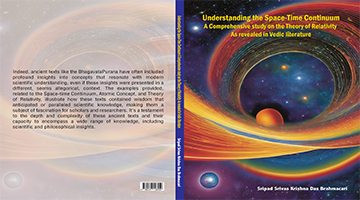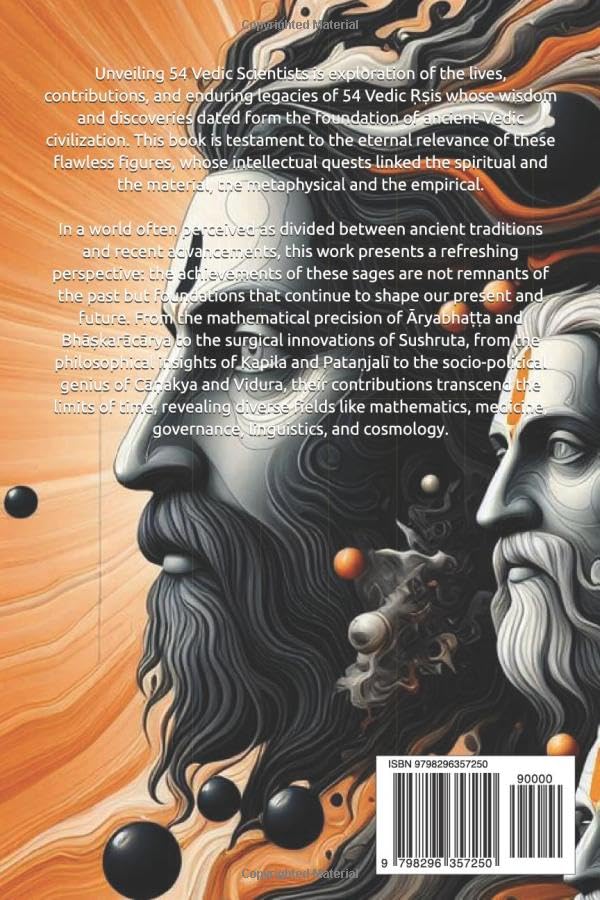This study highlights the connection between Sanskrit and artificial intelligence (AI) focusing on the usefulness of the ancient language in improving AI systems in the future. The structural clarity that Sanskrit possesses is worth focusing on because its grammar and rules are well understood, giving it some leverage in models of AI. The paper explores the concepts of Sanskrit as both a language and a science and its application in advanced natural language processing (NLP), complex knowledge representation, and language conservation. By synthesizing its hierarchical structure and symbolic content, AI systems can achieve improved accuracy, efficiency, and contextual awareness.
The research highlights Sanskrit’s potential in connecting ancient knowledge with modern AI applications. It suggests that the language’s structured nature could provide a robust framework for developing advanced AI models. Furthermore, the study considers the cultural relevance of Sanskrit in AI and proposes that its use in AI-driven initiatives could help preserve endangered languages and digitize ancient texts. The article concludes by addressing the potential challenges and future directions for integrating Sanskrit into AI, advocating for interdisciplinary collaboration to unlock the full potential of this ancient language in modern technology.
- Introduction
Sanskrit, an ancient language with a rich intellectual and cultural legacy, is gaining attention in Artificial Intelligence (AI) due to its highly structured grammar systematized in great detail by scholars like Panini. Panini’s Aṣṭadhyāyī is regarded as one of the best grammars in the world, emphasizing order and consistency. This makes Sanskrit appealing to AI applications, particularly in natural language processing (NLP) and symbolic reasoning, where the language’s skills and structures are highly useful.
The grammar of the Sanskrit language is based on rules and is highly formalized and structured. This makes it well-suited for meeting the specificity and resolution requirements of AI algorithms. Learners of Sanskrit should understand that the language is algebraic, meaning that the relationship between a word form and its function in a sentence is based on algebraic principles. Different forms of a word interact with the sentence structure, providing a foundation for developing advanced linguistic frameworks that can be leveraged by AI. This characteristic is especially valuable for natural language processing (NLP), where the ability to comprehend context, semantics, and syntax is essential.
Sanskrit literature is rich with philosophical and literary works that carry symbolic value, offering the potential for knowledge representation in AI systems. The symbolic nature of Sanskrit texts enables the encoding of complex ideas and concepts in a concise and precise manner, which is essential for AI’s reasoning and decision-making processes. This form of representation not only benefits logical AI applications but also provides a means to incorporate ethical considerations into AI systems by drawing from the profound philosophical wisdom embedded in Sanskrit literature.
This research aims to explore the application of Sanskrit’s linguistic features in AI, focusing on how its grammar and symbolic depth can be utilized to advance NLP, improve the accuracy of AI models, and enhance symbolic reasoning capabilities. Additionally, the study will examine the broader implications of integrating Sanskrit into AI, including its potential to contribute to cultural preservation and the revitalization of endangered languages, thus bridging the ancient and the modern in a meaningful and technologically relevant way.
- Linguistic Precision in Sanskrit
Sanskrit’s linguistic precision is one of its most distinguishing features, making it highly suitable for applications in Artificial Intelligence (AI), particularly in Natural Language Processing (NLP). This precision is rooted in the meticulous grammatical system outlined in Panini’s Aṣṭadhyāyī, an ancient text that systematically organizes the language’s syntax, morphology, and phonetics. The rules in the Aṣṭadhyāyī are not just descriptive but also prescriptive, allowing for a highly formalized structure that can be directly applied to computational models in AI.
Grammatical Precision and Rule-Based Systems
One of the primary reasons Sanskrit is so valuable in AI is its rule-based nature. Sanskrit grammar operates on a set of clearly defined rules that dictate word formation, sentence structure, and meaning derivation. For example, in Sanskrit, verbs are conjugated based on tense, mood, voice, number, and person, while nouns are declined based on case, number, and gender. These rules are highly consistent and predictable, making it possible to encode them into algorithms that can process language efficiently.
In practical AI applications, this means that Sanskrit can be used to develop more accurate language models for machine translation. For instance, when translating a sentence from one language to another, understanding the precise syntactical role of each word is crucial. Sanskrit’s clear grammatical structure allows AI to disambiguate meaning by analyzing the relationships between words, leading to more accurate translations.
Morphological Richness and NLP Applications
Sanskrit is an inflected language, meaning that the form of words changes to express different grammatical categories. This inflectional richness provides a robust framework for morphological analysis in NLP. For example, in machine translation and speech recognition, understanding the root of a word and its possible inflections is essential for accurate processing. Sanskrit’s well-defined rules for word formation and modification allow AI systems to break down complex words into their base components, understand their meanings, and then reconstruct them accurately in another language or context.
Consider the sentence “रामः फलम् खादति” (Ramaḥ phalam khādati), which means “Rama eats the fruit.” Here, “रामः” (Ramaḥ) is in the nominative case, indicating the subject, “फलम्” (phalam) is in the accusative case, indicating the object, and “खादति” (khādati) is the verb. In a machine translation system, understanding these grammatical roles is crucial for correctly translating the sentence into another language, such as English, where word order, rather than inflection, determines grammatical roles.
Practical AI Applications
In AI, particularly in NLP, the ability to parse and generate language with high accuracy is crucial. Sanskrit’s precise grammatical structure aids in developing robust parsers that can analyze sentences and determine the syntactical roles of words. This is particularly useful in tasks such as machine translation, where the correct interpretation of word order and grammatical relationships is essential.
For example, a Sanskrit-based NLP system could be used to develop a more accurate translation model by leveraging the language’s precise syntactical rules. Additionally, in semantic analysis, where understanding the meaning of a sentence requires a deep understanding of context and grammar, Sanskrit’s inflectional clarity allows for more nuanced interpretations. AI systems can use these rules to better understand and generate natural language, improving the performance of chatbots, virtual assistants, and other AI-driven language tools.
Sanskrit’s meticulous grammar and inflectional richness offer significant advantages for AI applications, particularly in NLP. By leveraging the language’s rule-based structure, AI systems can achieve higher accuracy in tasks such as machine translation, speech recognition, and semantic analysis. The precise and systematic nature of Sanskrit grammar makes it an ideal candidate for developing advanced computational linguistic models, contributing to the broader field of AI.
- Symbolic Representation and AI
The profound and symbolic language of Sanskrit is intricately woven into its philosophical and mathematical texts, presenting substantial benefits for artificial intelligence (AI), especially in terms of knowledge representation and reasoning. The utilization of symbolic representation in Sanskrit empowers the encapsulation of intricate concepts and connections succinctly and rationally, which is fundamental for AI systems reliant on coherent and organized data.
Scientific Basis of Symbolic Representation
In artificial intelligence, symbolic representation involves using symbols and rules to represent knowledge in a structured and understandable manner. This approach differs from sub-symbolic methods such as neural networks, which have more opaque decision-making processes. Symbolic AI entails creating explicit models of the world that the AI system can manipulate and reason about. This method is especially effective in fields requiring logic, reasoning, and complex decision-making.
Sanskrit’s grammar and structure naturally lend themselves to symbolic representation. For example, in Sanskrit philosophical texts, abstract concepts such as consciousness, existence, and causality are often represented using specific terms and symbols that capture their nuanced meanings. These symbols are not merely placeholders but are part of a broader system of thought that can be algorithmically encoded. For AI, this means that complex concepts can be represented using a formal language that is both precise and flexible, allowing for sophisticated reasoning processes.
Application in AI Reasoning
In AI, reasoning is the process by which the system makes decisions based on the knowledge it has been given. Symbolic reasoning involves using a set of rules to manipulate symbols and derive conclusions. Sanskrit’s structured syntax and precise vocabulary are ideal for creating these rule-based systems. For example, in automated theorem proving, where the AI must deduce new information from given premises, Sanskrit’s logical structure can provide a robust framework for representing and manipulating these premises.
Consider the use of syllogistic reasoning, which is fundamental in AI decision-making processes. In Sanskrit logic (Nyaya), a typical syllogism might be presented in a structured form, such as “All humans are mortal; Socrates is a human; therefore, Socrates is mortal.” The clarity and precision with which such logical sequences are expressed in Sanskrit allow them to be directly translated into AI algorithms, facilitating accurate and reliable reasoning.
Symbolic Representation in Knowledge Management
In knowledge representation, AI systems store and retrieve information in a way that mimics human understanding. Sanskrit’s ability to represent complex ideas symbolically makes it an excellent tool for this purpose. For example, in a knowledge management system designed to store medical information, Sanskrit could be used to represent intricate relationships between symptoms, diagnoses, and treatments. The language’s symbolic richness allows these relationships to be encoded in a way that is both comprehensive and easy to manipulate, enabling the AI to draw inferences and suggest treatments based on the encoded knowledge.
Furthermore, Sanskrit’s use of compound words (Sandhi and Samasa) allows for the creation of new, context-specific terms by combining existing words. This feature is particularly useful in AI systems that need to represent and reason about new concepts dynamically. For instance, in a medical AI application, new diseases or treatment methods could be represented by combining relevant terms, allowing the AI to quickly adapt to new information without requiring extensive reprogramming.
Sanskrit’s extensive use of symbolic language, rooted in its philosophical and mathematical traditions, offers valuable tools for AI in knowledge representation and reasoning. The language’s precise and structured nature makes it well-suited for creating clear, logical data structures that AI can manipulate for advanced reasoning and decision-making processes. By integrating Sanskrit’s symbolic representation into AI systems, researchers can enhance the capabilities of AI in areas that require deep understanding, logical reasoning, and complex decision-making.
- Applications in Natural Language Processing
Sanskrit’s highly regular structure offers significant advantages for Natural Language Processing (NLP) tasks. The language’s consistent grammar rules and well-defined syntax facilitate the creation of efficient parsing algorithms, which are essential for various NLP applications such as sentiment analysis, text summarization, and automated translation.
Parsing Algorithms and Sanskrit’s Grammatical Structure
In computational linguistics, parsing involves analyzing the structure of a sentence to understand its grammatical components and their relationships. Sanskrit’s grammar, defined by Panini, is inherently rule-based and precise, making it ideal for developing robust parsing algorithms. For example, in Sanskrit, the relationship between words in a sentence is determined by their endings (inflections), which indicate their role (subject, object, etc.). This clarity allows for the development of deterministic parsers—algorithms that can unambiguously determine the syntactic structure of a sentence based on predefined rules.
Mathematically, this aligns with the concept of context-free grammars (CFGs), which are used in programming languages to define valid sentence structures. Sanskrit can be seen as a natural CFG, where the production rules are defined by Panini’s grammar. In programming terms, a parser generated from Sanskrit’s grammar can be implemented using tools like Lex and Yacc, which are used to generate parsers in C programming for languages defined by CFGs.
For instance, consider the Sanskrit sentence “रामः ग्रामं गच्छति” (Rāmaḥ grāmaṃ gacchati), meaning “Rama goes to the village.” Here, “रामः” (Rāmaḥ) is the subject, “ग्रामं” (grāmaṃ) is the object, and “गच्छति” (gacchati) is the verb. A parser built on Sanskrit grammar can easily identify the subject-verb-object (SVO) relationship, ensuring accurate syntactic analysis, which is critical for further NLP tasks.
Sentiment Analysis
Sentiment analysis involves determining the sentiment expressed in a piece of text—whether it is positive, negative, or neutral. Sanskrit’s rich vocabulary and precise grammar provide a framework for developing sentiment analysis models that are highly accurate. The consistent use of prefixes, suffixes, and root words in Sanskrit allows for the creation of sentiment lexicons that can be used to analyze sentiment with greater precision.
For example, Sanskrit words often carry inherent emotional connotations due to their roots. By mapping these roots and their derivations, an AI model can accurately gauge the sentiment of a sentence. Consider the words “सुख” (sukha, meaning “happiness”) and “दुःख” (duḥkha, meaning “sorrow”). These words are derived from their respective roots “सु” (su, meaning “good”) and “दु” (du, meaning “bad”), combined with “ख” (kha). An AI system using Sanskrit grammar can leverage this consistent morphological structure to identify sentiment more effectively.
Text Summarization
Text summarization involves condensing a large body of text into a shorter version while retaining its key points. Sanskrit’s ability to convey complex ideas concisely, through the use of compounds (Samasa) and precise syntax, provides a foundation for developing algorithms that can perform accurate text summarization. The regularity of Sanskrit’s grammar enables the identification of key components in a text, such as subjects, actions, and objects, which are crucial for summarization.
For instance, Sanskrit’s use of Samasa (compound words) allows for the expression of detailed ideas in a compact form. An AI algorithm designed to summarize Sanskrit texts could use these compounds to extract the most significant information from a passage. This approach can be extended to other languages, where the AI, trained in Sanskrit’s summarization techniques, could apply similar strategies to condense information efficiently.
Automated Translation
Automated translation involves converting text from one language to another while preserving its meaning. Sanskrit’s clear rules for word order and sentence construction, combined with its extensive vocabulary, make it a strong candidate for improving machine translation algorithms. The language’s syntactic clarity ensures that the relationships between words are well-defined, reducing ambiguity in translation.
For example, translating the Sanskrit sentence “रामः वनं गच्छति” (Rāmaḥ vanaṃ gacchati) into English would straightforwardly yield “Rama goes to the forest,” with each word’s role clearly determined by its inflection. An AI system trained on Sanskrit can use these deterministic rules to improve the accuracy of translations between other languages, especially those with flexible word order or complex grammatical structures.
Sanskrit’s highly regular structure and grammatical precision make it an invaluable resource for developing advanced NLP algorithms. From efficient parsing and sentiment analysis to text summarization and automated translation, incorporating Sanskrit’s linguistic principles into AI systems offers the potential for greater accuracy and cultural relevance in language processing tasks. By leveraging the mathematical and computational aspects of Sanskrit grammar, AI can achieve new heights in understanding and processing human language.
- Cultural and Linguistic Preservation
Sanskrit’s relevance to Artificial Intelligence (AI) extends beyond its technical applications, playing a crucial role in the preservation of cultural and linguistic heritage. AI technologies can utilize Sanskrit to digitize, analyze, and preserve ancient texts, safeguarding knowledge that might otherwise be lost. This effort not only conserves historical texts but also ensures that the language’s intellectual and philosophical traditions are accessible to future generations.
Digitization of Ancient Texts
Digital technologies are among the most powerful means for the conservation of cultural heritage, especially that of ancient languages and scripts such as Sanskrit. Often, these texts are elaborately written and carefully inscribed on palm leaves or other such perishable materials that cannot survive the ravages of time. Where AI-assisted digitization is an action that combines scanning and other advanced technologies in converting these texts into other portable electronic formats that can be kept and used for viewing, research, and dissemination purposes. Sp. OCR systems can also be employed to digitize Sanskrit writings using Devanagari or other relevant script trained language models.
Also, AI can accept and be taught the specific variations related to the ancient scripts as used in a language like Sanskrit, which most times is not printed books. Computer algorithms can also assist in the process of transcription and translation of written texts to make it easy for most people to read the original text. AI eliminates all chances of the extinction of the language by providing for their stupefied digital imprints for these texts and ensuring that the knowledge of Sanskrit is utilized for the furtherance of education and research.
Analysis and Interpretation of Texts
Beyond digitization, AI can also play a significant role in the analysis and interpretation of Sanskrit texts. Many Sanskrit manuscripts contain complex philosophical, literary, and scientific knowledge that requires deep understanding and contextual analysis. AI tools, such as natural language processing (NLP) and machine learning algorithms, can be used to analyze these texts, identifying patterns, themes, and meanings that might be difficult for human scholars to discern due to the sheer volume and complexity of the material.
For instance, AI can assist in the interpretation of Vedic texts by analyzing the use of specific words, phrases, and symbolic language across different texts. This can lead to new insights into the cultural and historical context in which these texts were written, contributing to a more nuanced understanding of ancient Indian civilization. Moreover, AI can facilitate cross-referencing between texts, revealing connections and influences that were previously unnoticed.
Linguistic Diversity and Historical Language Development
The study of Sanskrit through the help of AI also helps develop a better view of the evolution of languages and languages in general. In turn, by examining Sanskrit with the help of AI linguists can learn how languages transform, how their grammatical frameworks expand, and how certain ideas move from one continent to another and many centuries later here in the form of user stories or screenplays.
This means, for instance, that it is possible through the use of artificial intelligence to find out the etymology of Sanskrit words, which forms were used, and what languages absorbed and modified the vocabulary of Sanskrit during many ages. Such information can help disentangle language families and save languages at risk of extinction by revealing their Sanskrit origins. The AI will be able to examine the phonetics and linguistics of old languages that are unrecognizable now and demonstrate the skills which were valid when the term Sanskrit itself meant ‘polished language’.
The intersection of Sanskrit and AI offers a powerful tool for cultural and linguistic preservation. By digitizing and analyzing ancient Sanskrit texts, AI helps preserve invaluable knowledge and makes it accessible to future generations. Moreover, the study of Sanskrit through AI contributes to a deeper understanding of linguistic diversity and historical language development, enriching our appreciation of this ancient language and its enduring influence on global culture.
- Challenges and Future Prospects
While the integration of Sanskrit in AI holds immense promise, several challenges must be addressed to fully realize its potential. These challenges include the limited availability of digitized Sanskrit resources, the complexity of the language, and the need for specialized knowledge in both Sanskrit and AI.
Challenges
- Limited Digitized Resources: One of the primary challenges is the scarcity of digitized Sanskrit texts. Although efforts have been made to digitize ancient manuscripts, a significant portion of Sanskrit literature remains in non-digital formats, often in deteriorating physical conditions. This limits the availability of training data for AI models. Moreover, existing digitized texts may suffer from inconsistencies in transcription, varying quality of OCR results, and lack of standardized formats, further complicating their use in AI.
- Complexity and Specialized Knowledge: Sanskrit’s linguistic complexity, with its extensive use of compound words (Samasa), intricate inflectional system, and rich semantic nuances, requires a deep understanding of the language. Developing AI models that can effectively process Sanskrit demands collaboration between computational linguists, Sanskrit scholars, and AI developers. The need for specialized expertise in ancient grammar systems like Panini’s Aṣṭadhyāyī makes it challenging to create accurate and efficient AI tools for Sanskrit.
- Cultural Sensitivity and Ethical Considerations: The use of Sanskrit in AI also raises cultural and ethical considerations. Sanskrit is not just a language but a carrier of cultural, religious, and philosophical heritage. AI systems must be developed with sensitivity to this heritage, ensuring that the language is not merely reduced to a computational tool but is respected and preserved in its cultural context.
Future Prospects
To overcome these challenges and fully leverage Sanskrit in AI, several key steps need to be taken:
- Creation of Comprehensive Sanskrit Corpora: A significant focus of future research should be on creating large, high-quality Sanskrit corpora. This involves digitizing existing manuscripts, standardizing digital formats, and ensuring high accuracy in transcription. Collaborative projects that involve linguists, historians, and AI specialists can help build comprehensive datasets that capture the full richness of Sanskrit literature.
- Development of Tailored AI Tools: AI tools need to be specifically designed to handle the unique characteristics of Sanskrit. This includes developing NLP models that can process compound words, accurately parse complex grammatical structures, and understand the semantic depth of Sanskrit texts. Advances in machine learning, particularly in the areas of unsupervised learning and transfer learning, can be harnessed to improve the performance of these models, even with limited annotated data.
- Interdisciplinary Collaboration: Successful integration of Sanskrit in AI will require strong interdisciplinary collaboration. Linguists can provide insights into the nuances of the language, historians can contextualize texts culturally and historically, and AI developers can design algorithms that leverage these insights. Such collaborative efforts will not only overcome existing challenges but also open new avenues for research, such as exploring the potential of Sanskrit in AI ethics, cross-linguistic studies, and cognitive science.
- Ethical and Cultural Stewardship: As AI continues to evolve, it is crucial that the use of Sanskrit in these technologies is guided by principles of cultural stewardship. This means preserving the integrity of the language and its cultural significance, while also ensuring that AI technologies developed using Sanskrit are accessible and beneficial to a broad audience, including those in the regions where Sanskrit originated.
The use of Sanskrit in AI, while promising, presents several challenges that must be addressed to unlock its full potential. By focusing on the creation of comprehensive digital resources, developing AI tools tailored to Sanskrit’s unique linguistic features, and fostering interdisciplinary collaboration, these challenges can be overcome. Future research and development in this area will not only enhance AI technologies but also contribute to the preservation and appreciation of one of the world’s oldest and most culturally significant languages.
- Conclusion
The integration of the Sanskrit language into AI offers significant and complex improvements in artificial intelligence. This is due to the structural nature of Sanskrit language and abstract concepts, making much contribution to natural language processing (NLP), and symbolic and indisputable acts of reasoning. By incorporating Sanskrit, AI systems can achieve greater linguistic precision, enabling more accurate language processing, machine translation, and semantic analysis.
Furthermore, Sanskrit’s rich depth of meaning aligns well with the requirements of AI, which has been seeking rational and logical structures to organize information for the development of cognitive computing and other AI applications. Additionally, integrating Sanskrit into AI can help preserve and revitalize the language, especially with the emergence of new methods to promote the study of ancient texts and cultures using technology. This integration not only protects and conserves important historical content but also takes into account the importance of cultural and linguistic diversity within the AI system.
The ongoing advancement of AI is expected to expand the influence of Sanskrit, shaping the trajectory of AI research and its real-world applications. The exploration of Sanskrit within AI holds the promise of connecting age-old wisdom with contemporary technology, paving the way for AI systems that are not only cutting-edge from a technical perspective but also deeply enriched by cultural and historical insights. This fusion of ancient knowledge and futuristic innovation has the potential to foster a more comprehensive approach to artificial intelligence, one that honours and integrates the depth of human heritage while propelling technological progress.
Views: 688































Origin of Science
The Psychospiritual Roots of Crime
Unveiling 54 Vedic Scientists
The Existence of the Soul: Exploring Neuroscience, Quantum Physics and Vedic Philosophy
Temporal Relativity in Vedic Literature: An Interdisciplinary Analysis of Time Dilation Narratives
Acharya Kaṇāda: The Ancient Sage Who Discovered the Atom
Evidence of Vedic Sanātana Hinduism as a Global Dharma
Perception of Quantum Gravity and Field Theory in the Vedas
String Theory as Mentioned in Veda
The Vedic Model of the Mind: A Contemporary Exploration
Vedic Contributions to Geometry: Unveiling the Origins of Mathematics
Matter and Consciousness in Achintya Bhedābheda: Bridging with Quantum Physics
A Comprehensive Study of Aeroplanes and Aviation in Vedic Literature